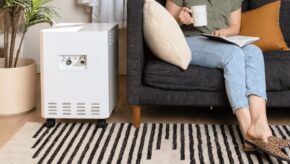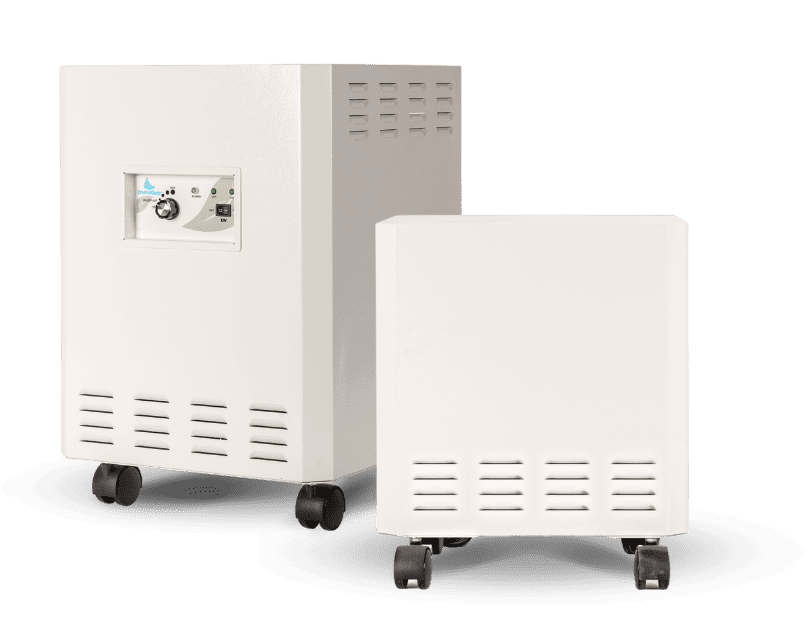The use of bleach has become a more prevalent cleaning agent in homes today, as many homeowners constantly battle to combat pathogens both in the air and on the surfaces of their home. This disinfectant cleaner has long been a popular product used in environments to help mitigate potential lurking bacteria and viruses that have found their way into this space through contact, exposure, or other transmission methods. Bleach cleaning agents are a versatile, inexpensive, and effective solution that can be applied to almost any surface to help combat these unwanted microorganisms present in a home. Anywhere from walls, clothing, carpeting, and furniture that are in your personal indoor environment will be able to have bleach applied to the material, however, when bleach fumes get trapped in these materials or surfaces it can lead to strong bleach fumes within the air of this indoor confined environment.
Bleach is a strong chemical cleaner that can become trapped in the pore, surfaces, and fibers of household surfaces and materials. When the bleach become stuck in these materials it will lead to a buildup of bleach in the air space of this environment, which can lead to an array of adverse effects both to the indoor air quality and to the health of occupants exposed to these bleach fumes. What can you to when you want to disinfect your home but not have the strong bleach fumes stuck in the air of this environment?
In this article we are going to learn more about the effects of bleach in an indoor environment, how long the bleach fumes last in the air, and how best to neutralize bleach fumes from the air of this environment.
Everything to Know About Bleach Chemical
Many homeowners will use bleach in their home, however, when it comes to the general understanding of what bleach is and how it works to disinfect surfaces is often lost on people. The chemical structure of bleach consists of sodium and chlorine hydroxide that will work together to form the disinfectant cleaner of bleach. Together these chemicals will work as an oxidizing agent that can be used to disinfect the various surfaces within an indoor environment, such as a home. An oxidative agent such as the component used in bleach [chlorine bleaches] will cause a chemical reaction called oxidation as it comes into contact with certain stains, certain germs or other organisms, according to How Stuff Works.
When it comes to the effectiveness of bleach against germs, viruses, and bacteria in an indoor environment, this powerful disinfectant will provide a high efficiency of kill or deactivation of these pathogens. According to the World Health Organization (WHO), the active ingredient in bleach (sodium hypochlorite) is an effective agent in killing bacteria, fungi and viruses, including influenza virus – but it is easily inactivated by organic material. The bleach disinfectant is said to disinfect a surface inside of a home within 10 to 60 minutes after initial contact time. Therefore, it is important to allow the bleach to sit on the surface after applying it to disinfect, rather than wiping it down to prevent bleach fumes in the indoor environment.
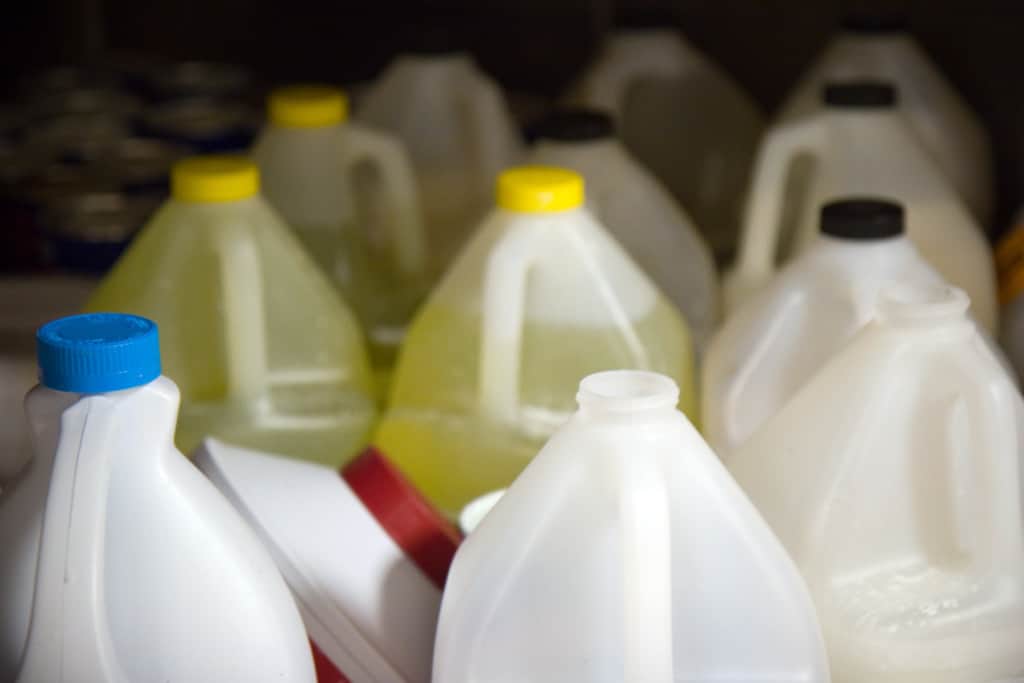
What is Bleach Used for
The commonly used chlorine bleach in homes, can be used and deployed in a variety of methods to clean and disinfect the surfaces in this indoor personal space. Chlorine bleach is a water solution of sodium hypochlorite that can be used as a household laundry bleach to whiten and disinfect clothing material. This has long been a popular use of bleach, since it gives the power of revitalizing and ridding stains off of garments quickly while disinfecting the material as well. Additionally, bleach can also be used for disinfecting an array of surfaces in a home to help protect the indoor space from pathogens that have settled on these surfaces in the indoor environment, according to the American Chemistry Council. Today, more than ever, American households are depending on and utilizing bleach in their personal indoor environments to help eradicate potential viruses and bacteria that have found their way into this indoor space.
Bleach can not only be used in households across the world but also in commercial spaces, such as hospitals, nursing homes, and day care facilities to help prevent the spread of infection in these higher risk environments. This disinfectant is a highly utilized product due to its high effectiveness in inactivating pathogens and its inexpensive price tag. However, like any product, bleach has its downsides – which will include its ability to produce strong bleach fumes into the air of an indoor space that can lead to irritating symptoms to those individuals exposed to this chemical smell in the air.
Is Bleach Safe?
The application process of using bleach in your personal indoor environment to disinfect surfaces can be an easy task, but one that can also produce some potential toxic conditions to this indoor space. When bleach is applied to the surfaces in your home, there can be several routes of potential exposure to this disinfectant chemical agent for those individuals exposed to this indoor space. It is important to be aware of the many causes of bleach exposure, which can include the following; aerosolized by spray, immersion (direct or splash), ingestion, and aspiration. The overall toxicity of bleach in an indoor environment will depend on the amount of bleach that was applied and where in the indoor space the bleach was directly applied.
According to the StatPearls journal with the title Bleach Toxicity the disinfecting agent bleach has been found to cause significant eye irritation as well as irritation to the mouth and throat. A potentially dangerous problem when it comes to bleach is when this disinfectant is mixed or combined with other household cleaners such as toilet bowl cleaners and ammonia. When bleach and ammonia are combined and mixed together on a surface it can result in the emission of a chlorine gas that can be dangerous to humans if exposure occurs. Chlorine gas can come into contact with moist tissues, such as the eyes or lungs and lead to damage to the airways and other hazardous health problems.
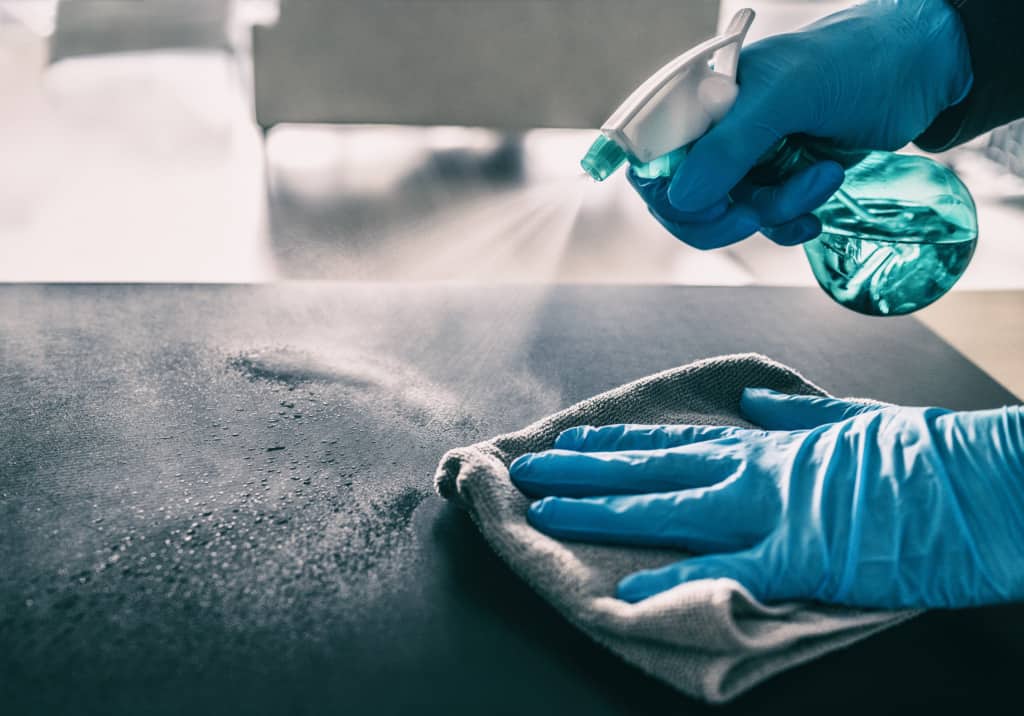
How Long Does Bleach Smell Last in the Air
It will come as no surprise to learn that breathing in bleach is a no-no, but unfortunately when it comes to the application of this disinfectant into your home the bleach fumes can become overwhelming and lead to very few methods to expel these fumes from the indoor environment – which will lead to occupant exposure. Bleach exposure can occur in an occupational setting, at home, or even in a commercial setting – wherever bleach is used in large concentrations in the environment. As bleach is applied directly onto a surface it will stay on that surface working to disinfect and deactivate the germs, bacteria, and other pathogens present in this environment – which as we found previous was anywhere from 10 to 60 minutes of contact time. During this process the bleach can turn into fumes in the air and lead to potentially toxic bleach fumes in the air.
Respiratory effects from bleach fumes in the air is the biggest risks to occupant health, as it can provoke asthma symptoms and bronchitis in many cases. According to Action Cleanup, individuals can smell chlorine bleach in low quantities, as small as 0.002 ppm in the air, which can elicit these adverse health effects to those who are exposed to these aerosolized bleach fumes. When it comes to how long bleach smell and fumes will last in the air of a home, it will ultimately depend on the amount of bleach applied in this space, the size of this indoor environment, and the airflow and ventilation present in the home.
Bleach Fumes Side Effects
Chlorine bleach has many various applications inside of a home, as we have discussed throughout this article. However, when this is applied indoors the chlorine chemicals in bleach can have adverse impacts when contact or exposure occurs in those individuals who spend a large amount of time in this compromised indoor space. Similar to the duration of time that bleach will last in the air of an indoor space, health effects can also depend widely on the route of contact exposure, the amount of bleach you were exposed to, and the length of time that you were exposed to the bleach in your indoor environment.
According to the Michigan Department of Community Health, when it comes to short-term side effects of bleach exposure the various health effects will include the following;
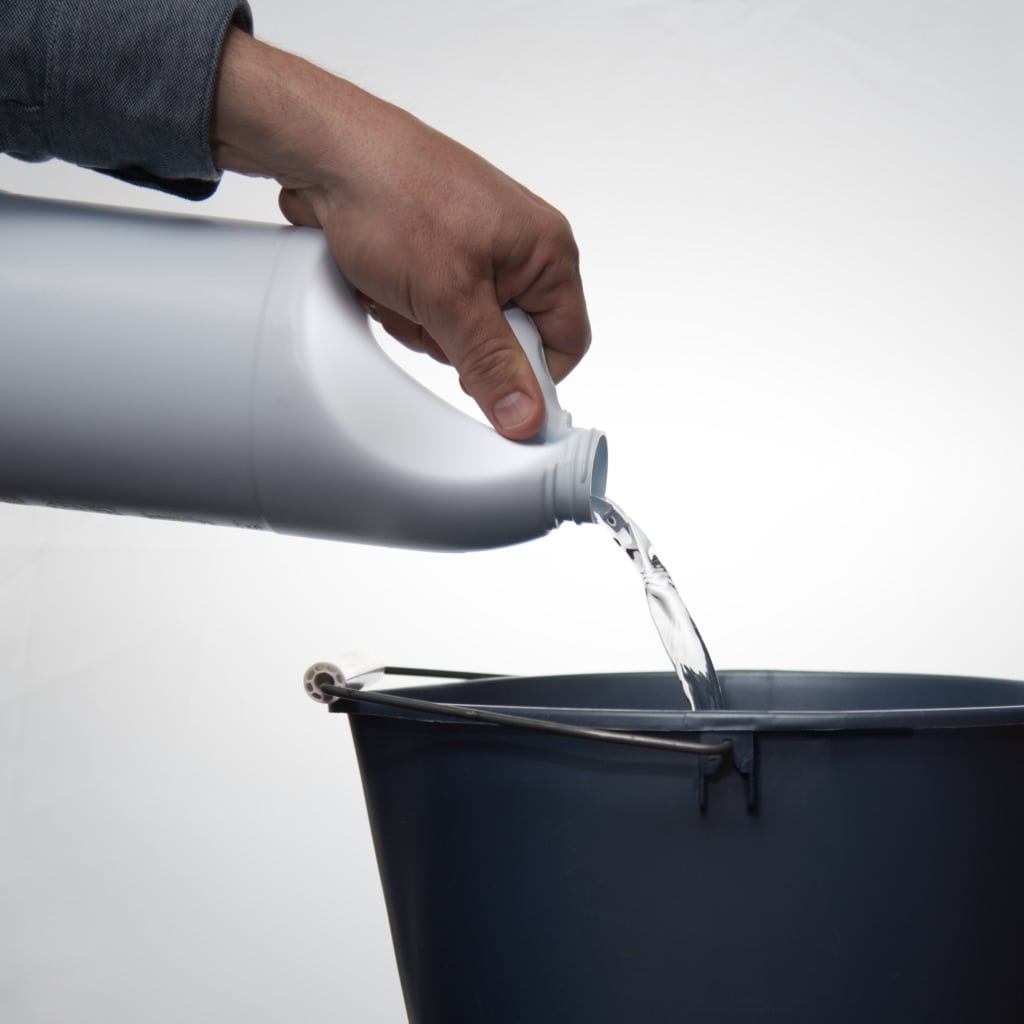
- Ingesting bleach into the body can lead to vomiting, nausea, throat, and stomach irritation.
- Contact exposure to bleach will can severe burning and irritation to the eyes, nose, skin, and even throat.
- Inhaling bleach fumes in large concentration can lead to a build-up of fluid in the lungs and even severe shortness of breath that could lead to significant health problems. Symptoms such as lung irritation, coughing, and even shortness of breath in some cases.
In comparison, long-term effects can include permanent lung disease such as shortness of breath and bronchitis. As well as in some extreme cases, bleach exposure in the environment can also lead to more severe health effects such as cancer and reproductive effects, according to MDCH.
How to Neutralize Bleach in Air
After applying the somewhat abrasive odor of bleach into your home, the smell may begin to overtake the indoor environment, tainting the airspace with this putrid aroma. Some individuals may revel in the smell that is produced from bleach and think of the smell as a demonstration of their home’s cleanliness, while others may detest the chemical odor that is hanging in the air after the use of this disinfectant product in their home. Nevertheless, if you begin to experience symptoms that you are correlating to the exposure to the bleach fumes and odors, it may be necessary to begin the process of getting rid of the bleach smell that is floating throughout your home’s airspace, and quickly!
The increase of airflow and ventilation within the environment that the bleach has been used in will be critical in helping to expedite the bleach smell from your home’s air. Open all windows and doors in the house once you have applied bleach, this will help to create positive air flow throughout the space. Additionally, you can add fans into the space to help remove this contaminated air and replace it with fresh outdoor air, however, the trick is to aim the fans into the room and out the windows to promote this airflow removal. Lastly, an air purifier can be one of the best options when it comes to mitigating bleach fumes from the air of a home.
An air purifier is a device that is designed to clean the indoor air of an environment by removing pollutants that are present in the air space. These air cleaning devices come in a variety of different variations, all of which will use a specific technology to filter the air within these machines. Some of the more popular air purifier technologies include carbon, ozone, ionizers, and HEPA filtration – with some of these working to remove pollutants, odors, and/or chemicals from the air. Thus, when it comes to filtering and neutralizing bleach fumes from the air of a home, it is best to do your research to ensure that you pick the ideal air purifier that will effectively work to neutralize the chemical composition of bleach fumes in the air.
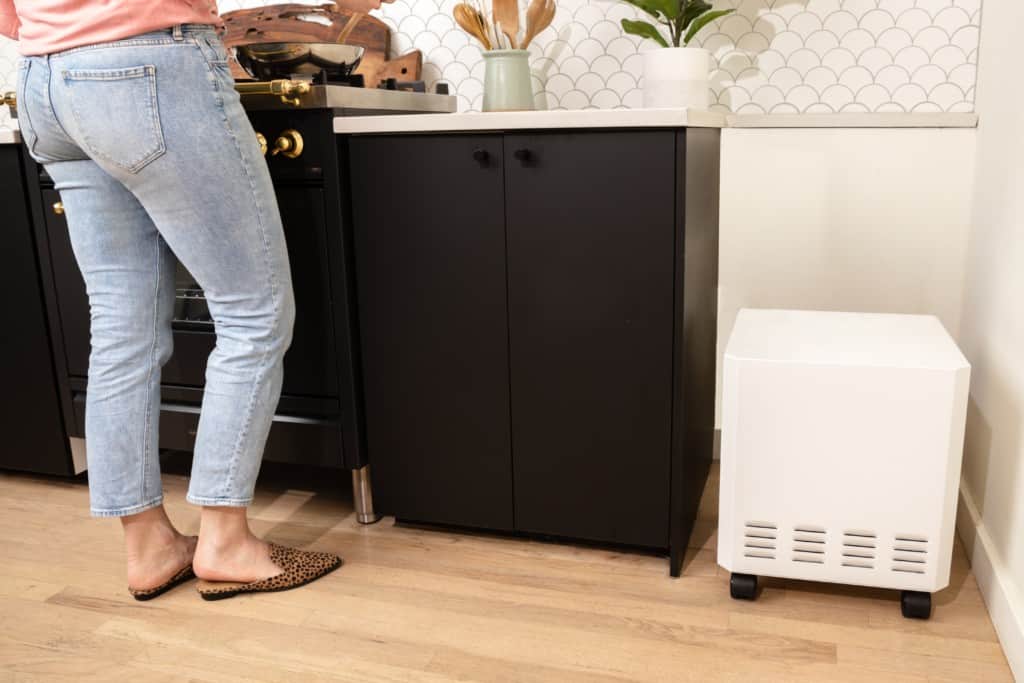
The EnviroKlenz Air Purifier is a revolutionary air purification device that works to not only remove pollutants from the air but will also completely neutralize chemicals and odors from the air space. The EnviroKlenz® technology is a proprietary earth mineral material that is designed to favorable interact with a broad spectrum of chemical and odor compounds present in the air space by capturing, containing, and neutralizing them completely in the earth mineral technology. In addition, the EnviroKlenz Air Purifier also contains a second-stage filtration using a hospital-grade HEPA filter for fine particulate removal larger than 0.3 microns in size at a 99.99 percent efficiency. Simply, install the two filters into the machine, close the back, and turn the system on to begin eradicating pollutants from the air, including bleach fumes with ease and effectiveness.
Article Sources:
- How Stuff Works: How Bleach Works? (link)
- World Health Organization (WHO): Infection Prevention and Control of Epidemic- and Pandemic-Prone Acute Respiratory Infections in Health Care (link)
- American Chemistry Council: Chlorine Bleach (link)
- StatPearls: Bleach Toxicity (link)
- Action Cleanup: Are Bleach Fumes Dangerous? (link)
- Michigan Department of Community Health (MDCH): Bleach Fact Sheet (link)


